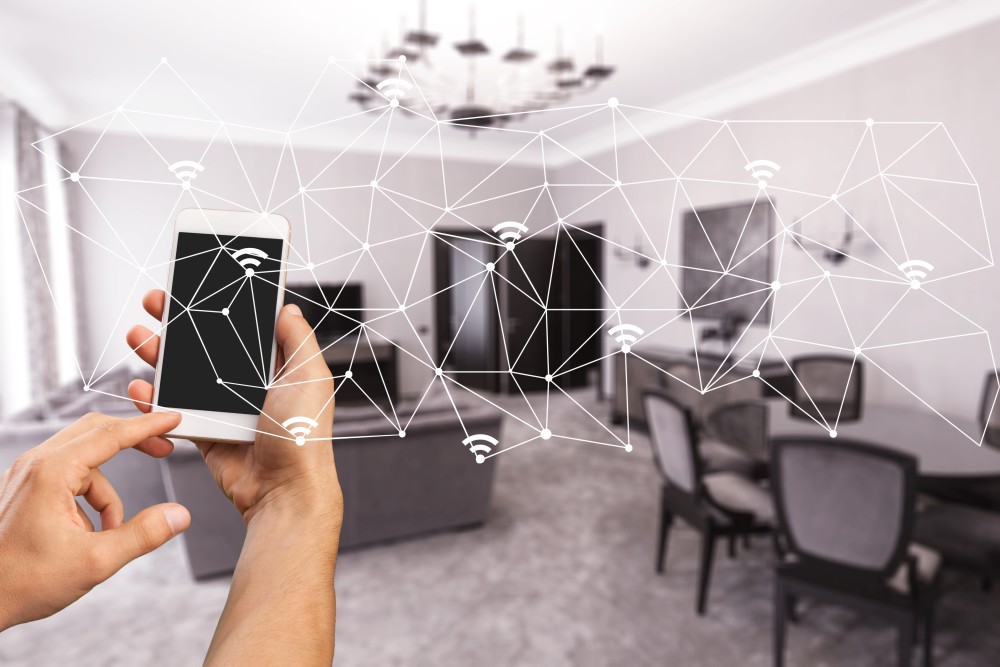“Get Smart,” a popular TV sitcom from the 1960s, is an apt description for the explosion of interest in purchasing smart personal devices, from smart robots that vacuum floors to virtual assistants like Amazon’s Alexa and Samsung’s Bixby that can answer all sorts of questions, such as “who won the Academy Award for Best Picture,” while simultaneously directing the smart coffee machine to brew up a double espresso.
An internet-connected smart apartment is a big deal for property managers, who can seize market share and more robust rental fees by equipping apartments with smart lighting, security cameras, thermostats, and even refrigerators and dishwashers that wirelessly communicate with tenants to enhance their interest and satisfaction.
The challenge with so many smart home appliances and tenants’ smart personal devices, like smartphones, laptops, virtual personal assistants, and wireless flat-screen televisions, is that their damage or destruction may not be covered under a property manager’s standard commercial property insurance or a renter’s insurance policy.
Fortunately, necessity is the mother of invention, impelling a few insurers to create and offer electronic protection insurance coverage for tenants to cover the cost of damage to their owned devices.
Ready, Set, Liftoff
The innovative electronics protection insurance coverage is an endorsement or add-on to a renter’s insurance policy that generally costs less than $1.50 a month. If a tenant does not buy renters insurance, the person cannot access the endorsement.
Regrettably, only 46% of tenants carry renters insurance compared with 91% of homeowners who carry insurance policies, according to the latest statistics compiled by the New York-based Insurance Information Institute. That means that more than half the number of tenants across the country have no access to the innovative electronics protection coverage to absorb the costs of damaged smart entertainment systems, smartphones, tablets, virtual personal assistants, and all other smart electronic equipment.
While some electronic devices have limited warranties backed by the manufacturer, they generally cover manufacturing defects and microelectronic failures—and not damage caused by an accident. This is the case, for instance, with the iPhone, Android, and Samsung Galaxy smartphones. In addition to absorbing these causes of damage, electronics protection insurance also covers damages due to dropping, knocking over, or “drowning” a smart device in spilled coffee, something I recently learned to my chagrin. Not just physical damage is covered; a sudden mechanical or electrical breakdown is covered, as well.
Inexpensive Protection
Adding the endorsement to a renter’s insurance policy costs an average of $16 to $20 per year (assuming a $250 deductible). This means a renter who trips while carrying a new $2,800 laptop that falls to the floor, shatters, and is no longer functional would receive a check for $2,550.
The financial limit in the insurance endorsement is $100,000, likely more than enough money to absorb damage to all the smart devices in a fully connected home automation ecosystem. Every type of smart device is covered, including smart exercise equipment, security cameras, and health monitoring systems.
Undoubtedly, tenant ownership of smart personal devices is bound to increase. The global market was expected to surpass 832 million shipments worldwide in 2019, up nearly 27% from the prior year’s shipment tally, according to IDC. Sustained market growth is anticipated through 2023, the technology research firm stated, projecting a 16.9% compound annual growth rate over the period. The biggest share of the smart home device market belongs to makers of smart video entertainment systems.
This year’s Consumer Electronics Show in Las Vegas indicates no pause in the development of ever-more innovative and useful smart personal devices, such as Ballie, a bright yellow robot from Samsung that follows a tenant around an apartment to respond to the person’s needs, further blurring the boundaries between the physical and virtual worlds.
Insurers who get out in front of their tenants’ digital transformations by offering electronics protection insurance as an endorsement to a renter’s insurance policy are likely to gain a marketing edge over competitors that are slow to recognize this important trend. As my mother always told me, “Smart is as smart does.”
